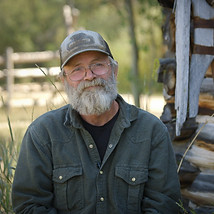
The Big Hole Valley
The Big Hole Watershed is an expanse of mostly intact grasslands, sage steppe, and forested mountains that host a diversity of wildlife, from sage grouse to pronghorn, and waterways that are key fish habitat. A large portion of the Big Hole River runs through working rangelands, and the fly fishing on this river attracts people from all over the world, making agriculture and recreation the driving forces of the local communities here. Find out how people representing a diversity of needs within a watershed are coming together to benefit all life here within the land, water, and communities, and how this is building resiliency throughout droughts and other pressures. This content is centered around the work of the Big Hole Watershed Committee.
Scroll down to view the film, podcasts, learn about who is featured, & view informational links.
Life in the Land: The Big Hole Valley
Full film: 32 minutes
How to use the content
Please feel free to screen this film, or portion thereof, in your gathering, workshop, or classroom.
If you show the film publicly, please fill out THIS SHORT FORM.
Click on the arrows icon to watch in full screen. Click on the Vimeo icon to watch the film from Vimeo.com or to download the .mp4 of the film before your screening.
Voices Featured & Podcasts

Jim Hagenbarth
Jim Hagenbarth is a cattle rancher near Glen, Montana, along the lower Big Hole River, and has been a part of the Big Hole Watershed Committee since its first days in the mid-90's. Jim tells us what he wants the public to know about a rancher's role as a steward of the land, the success and challenges of collaborative work, and the impacts of droughts, not only to ranchers, but on the sustainability of open space and connected ecosystems.

Liz Jones
Liz Jones operates her ranch in Wise River, in the mid-section of the Big Hole River. Liz has been a part of the Big Hole Watershed Committee since its first days in the mid-90's. She speaks to the changes she has seen in the Valley as well as what the drought and fires of 2021 meant for ranchers.
Her podcast episode also features Eric Thorson, owner of Sunrise Fly Shop. Both Eric and Liz speak to the value and urgency in different perspectives coming together for the betterment of all life in the Valley that depend on the Big Hole River and its tributaries.

Pedro Marques
Pedro Marques, who has an ecology and landscape-scale restoration background, is the Executive Director of the Big Hole Watershed Committee. Pedro speaks to the importance of bringing varied perspectives together, and how local solutions can address relatable pressures that are being felt around the world; droughts, increased demands on waterways, sustainability of local agriculture, wildlife habitat loss, and land development. He also shares the value in letting nature and local voices guide the work.
This podcast episode also features Emily Harkness of the High Divide Collaborative and Dr. Paul Rogers of the Western Aspen Alliance.

Eric Thorson
Eric Thorson owns Sunrise Fly Shop in Melrose, MT, and connects people from all over the world to the special nature of the waters, land, and people in this place. Eric speaks to the significance of fly fishing in the Big Hole as an economic driver and a catalyst for conservation. He also speaks to the impacts on the fishery and his livelihood from a changing climate.
This podcast episode also features Liz Jones, rancher in the Big Hole Valley. Both Eric and Liz speak to the value and urgency in different perspectives coming together for the betterment of all life in the Valley that depend on the Big Hole River and its tributaries.

Jim Magee
Jim Magee is a former biologist for the U.S. Fish and Wildlife Service's Partners for Fish & Wildlife Program in the Big Hole Valley. The Partners program provides technical and financial assistance to landowners, managers, tribes, corporations, schools and nonprofits interested in improving wildlife habitat on their land. Jim has also been an active part of the Big Hole Watershed Committee for the past 28 years. Jim shares about creating productive relationships between agency and private landowners and the collaboration that has taken place between U.S.F.W.S, ranchers, and others to successfully keep the Arctic grayling fish from being listed as an endangered specie. Jim offers great insight for both agency and landowners alike.

Chet Robertson
This episode hears from Chet Robertson, a Range Rider for the Big Hole Watershed Committee. As a tracker, he keeps a close connection with the area's wolf packs, to predict their movements, and to discourage their presence around grazing areas in order to prevent wildlife-livestock conflict. Chet speaks about the tracker lens that he moves through the landscape with, his perspective on the social divisiveness of wolves, his experience owning the Jackson Mercantile for the last 20 years, and the larger connections to what small towns are up against.